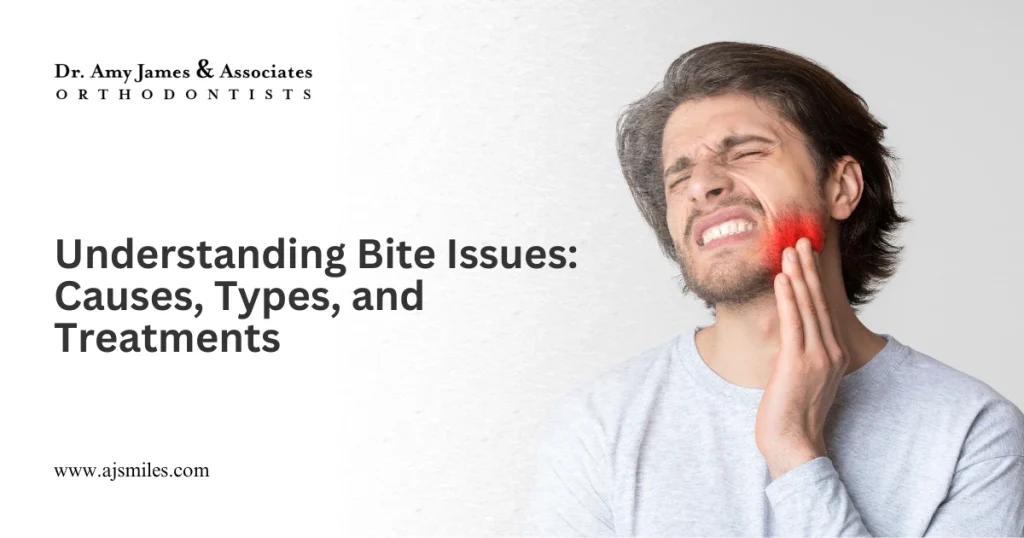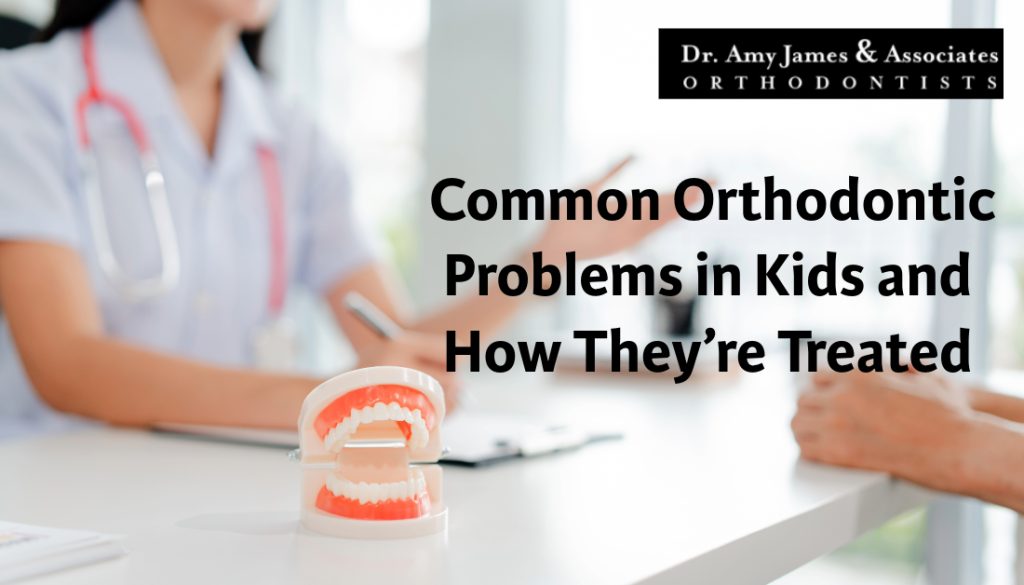When we say a healthy smile, our mind usually goes directly to straight and healthy teeth. However, it has another very important element of oral health that not everyone considers, and that would be your bite. How the upper and lower teeth contact one another when you chew, talk, or rest your mouth has a monumental place in the overall oral usage and well-being.
In this blog, we will discuss what bite issues are, what causes bite problems, the most common types, and the treatment avenues that can be taken to help you obtain a better and pain-free smile.
What are Bite Issues?
Malocclusions or bite issues take place when the teeth in the lower and upper jaws are misaligned. A misalignment may result in many issues. There are problems related to chewing and speaking, pain in the jaw, wear of teeth, and even facial appearance.
Some bite anomalies are mild and, even though they do not need treatment, can still significantly impact your oral health and quality of life.
What causes Bite Problems?
Many causes may initiate bite issues, and data shows that many individuals have had them since childhood. It is usually caused by:
- Genetics: Overcrowding, spacing, or misalignment may occur as a result of a mismatch in the size of the jaws.
- Tongue thrusting: This is a situation where the tongue forces its way between the teeth during swallowing or talking, gradually pushing the teeth out of alignment.
- Teeth grinding (bruxism): This will cause the teeth to not meet smoothly and unevenly.
- Trauma or injury: With an accident involving the jaw or the teeth, the alignment might be tipped because of the accident, unless it is corrected in time.
- Loss of teeth: The lack of teeth, especially when it is untreatable, causes the surrounding teeth to shift and disrupts the bite’s balance.
Common Types of Bite Problems
There are a variety of bite issues. These are the most typical ones:
- Overbite – When the upper front teeth grow excessively over the lower front teeth, it’s known as an overbite. Mild overbite usually occurs, but severe overbite can lead to wearing out of the lower teeth and jaw pain.
- Underbite – When the teeth are bitten together, the lower teeth will be in front of the upper teeth in an underbite.
- Crossbite – In crossbite, the upper teeth will be positioned within the arch rather than on the outside. It may be on the side or sides of the mouth or front of the mouth, and this can cause teeth to wear, gum recession, or facial asymmetry.
- Open bite – This occurs when the upper and lower teeth never meet when the mouth is closed. It may render it hard to bite into foods and is usually represented by thumb sucking or tongue thrusting.
- Crowding or Spacing – Again, these are not as bite problems per se, but both excessive crowding or spacing can interfere with the bite and predispose to other dentistry problems.
Why Treat Bite Issues?
Bite issues extend beyond cosmetic concerns. Otherwise, they may cause:
- Painful jaws or TMJ maladies (long-standing)
- Facial pain or headache
- Overuse or chipping of teeth
Treatment Options for Bite Correction
The treatment option will depend on the kind and magnitude of the bite problem. Some of the common resolutions are:
- Braces – Early traditional metal or ceramic braces remain a tried and true method of troubleshooting bite problems. They put the brackets and wires that slowly move the teeth into the correct position.
- Clear Aligners – Clear aligners, such as Invisalign, are the best option among teenagers and adults. They are almost invisible and removable, thus proving to be a less invasive solution to small to moderate cases of bite problems.
- Palatal Expanders – Expanders are mostly done on children to expand the upper jaw to alleviate crossbites or overcrowding of teeth at an early age.
- Surgical Method – In severe cases of the jaw structure, surgical operation of the jaws (corrective jaw surgery) might be necessary; this is necessary where orthodontics is insufficient.
- After treatment, retainers are used for long-term maintenance to prevent relapse before the bite is fully corrected.
Bite Issues Deserve Serious Attention
Bite issues can affect an adult or a child. As a parent, you need to observe your child and seek an early evaluation and treatment. A healthy bite results in improved functioning, comfort, self-confidence, and a better smile.
Explore More on Bite Issues with AJ Smiles
Dr. Amy James & Associates is a great source to learn about common bite problems. We divide types of bites, such as underbites and open bites, and inform patients about what they are currently experiencing and how this can be helped. It is a useful guide to begin with for an individual who has in mind to receive orthodontic care.
To sum up
In case you suspect you or your child has bite issues, waste no time in consulting an expert. Improving bite problems not only enhances your smile but also benefits your general well-being and self-esteem. Take the first bite into a balanced, healthy bite and book your consultation today with us.





